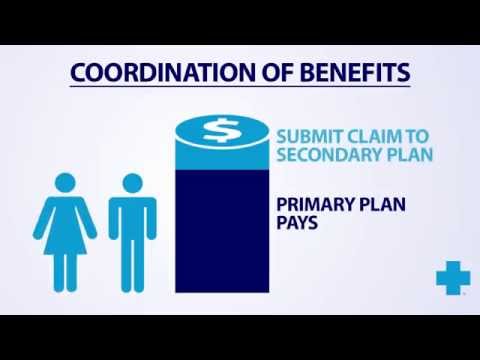Blue Cross Blue Shield Coordination of Benefits
In this article, we will discuss the topic of Blue Cross Blue Shield’s coordination of benefits. Blue Cross Blue Shield is a well-known healthcare insurance provider that offers coverage to millions of individuals and families across the United States. Understanding how coordination of benefits works can help you maximize your insurance coverage and minimize out-of-pocket expenses.
What is Coordination of Benefits?
Coordination of benefits, also known as COB, is a process that occurs when an individual is covered by multiple insurance plans. The purpose of the coordination of benefits is to ensure that the total amount paid by all insurance plans does not exceed the actual cost of the medical services received.
How Does Coordination of Benefits Work?
When you have multiple insurance plans, one plan is considered the primary payer, and the other plan(s) are secondary payers. The primary payer is responsible for processing and paying the claim first, up to the limits of their coverage. The secondary payer then processes the claim and pays any remaining balances, as long as the services are covered under their plan.
Benefits of Coordination of Benefits
Coordination of benefits offers several benefits for individuals who have coverage under multiple insurance plans:
Maximized Coverage: COB ensures that you receive the maximum coverage available from all your insurance plans.
Reduced Out-of-Pocket Expenses: By coordinating benefits, you can minimize your out-of-pocket expenses, as the secondary payer may cover costs that the primary payer does not.
Streamlined Claims Process: COB simplifies the claims process by ensuring that each insurance plan pays its appropriate share, reducing the need for manual coordination.
Steps to Coordinate Benefits with Blue Cross Blue Shield
To effectively coordinate benefits with Blue Cross Blue Shield, follow these steps:
Notify Blue Cross Blue Shield: Inform Blue Cross Blue Shield that you have coverage under another insurance plan.
Provide Documentation: Submit any required documentation, such as a Coordination of Benefits form, to Blue Cross Blue Shield.
Submit Claims to Primary Payer: When seeking medical services, submit your claims to the primary payer first.
Submit Claims to Blue Cross Blue Shield: After the primary payer has processed the claim, submit any remaining balances to Blue Cross Blue Shield for secondary processing.
Review Explanation of Benefits (EOB): Carefully review the EOB statements from both the primary and secondary payers to ensure accurate processing and payment.
Coordination of Benefits Example
Let’s consider an example to better understand how coordination of benefits works:
John has health insurance coverage through both Blue Cross Blue Shield and his spouse’s employer-sponsored plan. He undergoes a medical procedure that costs $2,000. Blue Cross Blue Shield is his primary payer, and his spouse’s plan is the secondary payer.
Blue Cross Blue Shield processes the claim first and covers $1,500, leaving a remaining balance of $500. John then submits the claim to his spouse’s plan, which covers the remaining $500.

Coordination of benefits is an essential process for individuals with multiple insurance plans. Understanding how to effectively coordinate benefits can help you maximize coverage and minimize out-of-pocket expenses. By following the steps outlined in this article, you can ensure a streamlined claims process with Blue Cross Blue Shield and other insurance providers.
Frequently Asked Questions about Blue Cross Blue Shield Coordination of Benefits
1. What is the coordination of benefits (COB)?
Coordination of benefits is a process used by insurance companies to determine which plan should pay first when you have multiple health insurance coverage.
2. How does coordination of benefits work?
When you have multiple insurance plans, the primary plan pays first, and the secondary plan covers the remaining costs up to the allowed amount.
3. How do I know if I have coordination of benefits?
You can check your insurance policy or contact your insurance provider to determine if you have coordination of benefits.
4. Can I have coordination of benefits with Blue Cross Blue Shield?
Yes, Blue Cross Blue Shield offers coordination of benefits for individuals who have multiple insurance plans.
5. What information do I need to provide for the coordination of benefits?
You may need to provide information about your other insurance plans, such as policy numbers and coverage details, to facilitate the coordination of benefits.
6. Does the coordination of benefits affect my premiums?
No, the coordination of benefits does not directly impact your premiums. It is a process to ensure proper payment between insurance plans.
7. Can I coordinate benefits with plans from different insurance companies?
Yes, coordination of benefits can be done between different insurance companies, including Blue Cross Blue Shield.
8. What happens if I don’t coordinate benefits?
If you don’t coordinate benefits, you may end up paying more out-of-pocket expenses than necessary, as the primary plan may not cover the full cost.
9. How do I initiate coordination of benefits with Blue Cross Blue Shield?
You can contact Blue Cross Blue Shield’s customer service or visit their website to initiate coordination of benefits and provide the necessary information.
10. Can I update my coordination of benefits information?
Yes, if there are any changes to your insurance coverage or if you obtain new insurance, you should inform Blue Cross Blue Shield to update your coordination of benefits information.




